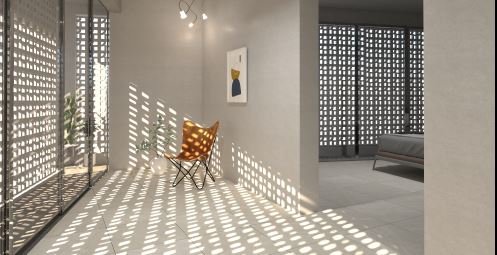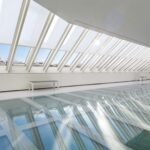The Role of Light and Shadow in Architectural Design
- By -Peter
- Posted on
- Posted in Architectural Design
Light and shadow are fundamental elements in architectural design, influencing the perception, functionality, and atmosphere of built environments. This article delves into the dynamic interplay between light and shadow, showcasing their pivotal role in shaping architectural spaces.

Understanding Light and Shadow in Architecture
Natural vs. Artificial Lighting
Natural lighting from the sun varies throughout the day, affecting the intensity, direction, and color temperature of light entering buildings. Artificial lighting complements natural light, providing consistent illumination and enhancing visual comfort during evening hours and in interior spaces.
Shadow as a Design Element
Shadows cast by architectural elements, foliage, and structures create contrast, depth, and visual interest within spaces. Strategic placement of shadows can define architectural forms, highlight textures, and guide movement through environments, contributing to spatial dynamics.
Techniques for Utilizing Light in Architectural Design
Daylighting Strategies
Daylighting techniques optimize natural light penetration into buildings, reducing energy consumption and enhancing occupant well-being. Strategies include orientation, window placement, light shelves, and reflective surfaces that maximize daylight while minimizing glare and heat gain.
Artificial Lighting Design
Artificial lighting design integrates luminaires, fixtures, and controls to enhance functionality, ambiance, and visual comfort in architectural interiors and exteriors. Layered lighting schemes, task-specific illumination, and energy-efficient technologies ensure optimal lighting quality and flexibility.
The Impact of Light and Shadow on Spatial Perception
Creating Visual Hierarchy
Light and shadow influence spatial hierarchy by emphasizing focal points, architectural features, and circulation paths within buildings. Contrast and illumination gradients guide users’ visual experiences, enhancing wayfinding and spatial orientation in complex environments.
Enhancing Architectural Forms and Textures
Lighting and shadow accentuate material textures, surface details, and sculptural elements, adding depth and character to architectural compositions. Play of light enhances visual aesthetics, revealing intricate craftsmanship and highlighting design intent.
Examples of Light and Shadow in Architectural Design
- Sagrada Família, BarcelonaAntoni Gaudí’s masterpiece uses stained glass windows to filter sunlight, casting vibrant colors and patterns that animate interior spaces with dynamic light and shadow effects.
- Fallingwater, PennsylvaniaDesigned by Frank Lloyd Wright, Fallingwater integrates natural surroundings and water features to interact with sunlight, creating ever-changing patterns of light and shadow that blend with organic architecture.
Functional and Psychological Benefits of Light in Architecture
Promoting Well-being and Productivity
Natural light exposure in architectural spaces promotes circadian rhythms, enhances mood, and supports productivity among occupants. Daylit environments foster a sense of connection to the outdoors, improving mental health and overall satisfaction.
Energy Efficiency and Sustainability
Efficient lighting design reduces energy consumption, operational costs, and carbon footprint in buildings. Integrating daylighting strategies and energy-efficient lighting technologies aligns with sustainability goals, contributing to resource conservation and environmental stewardship.
Challenges and Considerations in Light and Shadow Design
Mitigating Glare and Solar Heat Gain
Balancing daylighting benefits with glare control and solar heat gain management requires careful planning of shading devices, window treatments, and light diffusion techniques to maintain visual comfort and thermal performance.
Maintenance and Long-term Performance
Regular maintenance of lighting systems and control mechanisms ensures optimal performance and longevity. Technological advancements in LED lighting and smart controls offer opportunities for energy savings and operational efficiency in architectural lighting.
Future Trends: Innovations in Light and Shadow Design
Responsive and Interactive Environments
Advancements in sensor technology and responsive lighting systems enable adaptive environments that adjust light levels, color temperature, and ambiance based on user preferences and environmental conditions.
Biophilic Design Integration
Biophilic design principles incorporate natural elements, patterns, and lighting effects to emulate natural environments within built spaces. Integrating biophilic elements enhances occupant well-being, connectivity to nature, and sustainability in architectural design.
Conclusion: Harnessing Light and Shadow for Architectural Excellence
Light and shadow are integral to architectural design, influencing aesthetics, functionality, and human experience within built environments. By leveraging their transformative potential, architects create spaces that inspire, engage, and enhance quality of life for occupants.



